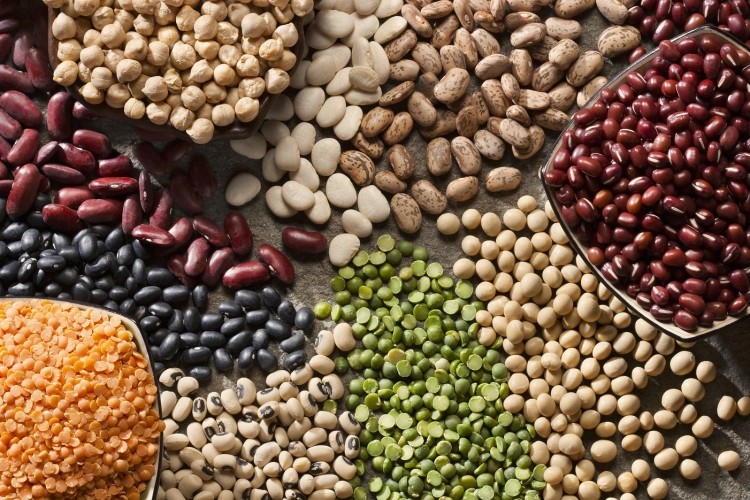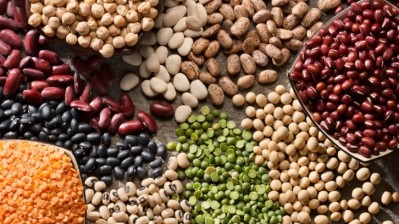Resistant-starch-rich beans and pulses offer prebiotic options for formulators

Writing in Nutrients, researchers from Florida State University state that starch makes up about half of the carbohydrates in pulses. RS is undigested in the upper intestine but is fermented but gut microbes in the large intestine, and therefore acts a prebiotic.
While there are 200+ human clinical trials using resistant starch to address digestibility, immune health, insulin and glycemic response, colonic health and fermentation, satiety and weight management, these have focused on maize, potato, acorn, and sago-derived RS. For pulses and pulse-derived RS, there is a “paucity of [clinical] studies”, said the reviewers.
“This presents an exciting opportunity for future research involving rational and stringent design of longitudinal multi-omics clinical nutrition studies addressing the above variables for comprehensively deciphering the detailed mechanisms underlying the effects of different types of pulse-derived RS on the gut microbial ecology, metabolome, intestinal function, and host health,” they wrote.
The reviewers also called for more efforts to develop standardized and systemic methods to appropriately characterize the chemical composition of RS purified from pulses. This is currently a challenge, they noted, because of the substantial differences based on the type of pulses, the cultivars, the method of isolation and subsequent industrial modifications, plus their interactions with other nutrients in the pulses.
Types of RS
Commenting independently on the review, Clémentine Thabuis and Caroline Perreau, Research Managers for Nutrition and Health R&D at Roquette, noted that there are several types of RS:
RS1 and RS2 are not digestible due to their structure: starch is protected by either cell walls or by the granule and is not accessible to the intestinal enzyme.
For RS3 and RS4, starch is modified (cooking and cooling = retrogradation for RS3 and chemically for RS4) making it undigestible and resistant to the attack of intestinal enzymes.
RS5 is a specific complex with starch and lipid, thus preventing granule dissolution during cooking.
Incorporation of RS into food products does have some formulation challenges, noted Thabuis and Perreau: “RS are sensitive to food process and cooking,” they said. “In addition, we can see that the tested doses are also quite high (30g/d).”
Having said that, Canada-based Solnul offers an RS2 derived from potato that is effective at low doses with small particles that are water dispersible and has a neutral taste, claims the firm, which has worked with contract research organization Nutrasource on a trial showing prebiotic benefits at just 3.5g.
Resistant dextrin RD vs resistant starch RS
Another way to obtain a prebiotic effect with a smaller dose is to look at some of the other prebiotics on the market that can address the same physiological targets (bacterial modulation, SCFA production, and beneficial effects on membrane integrity), said Thabuis and Perreau, and one of them is resistant dextrin (RD).
“RD are also obtained from starch but using a specific process: starch is cut into lower molecular weight molecules called dextrin,” they explained. Roquette produces its Nutriose RD using a patented method that created smaller prebiotic molecules that can perfectly resist food process and cooking, exerting their prebiotic effect in the intestine. Clinical trials indicate that effective doses are between 8 and 15g/d.
Consumer demand
Despite the unanswered questions regarding pulse and pulse-derived prebiotics, what’s clear is that there is a market demand for such ingredients: According to HFI, 78% of global consumers agree their digestive health is extremely or very important.
Innova Market Insights data suggests two out of three consumers worldwide agree that gut health is key to achieving holistic wellbeing, and FMCG Gurus has calculated that well over half of global consumers say they look for food and drink products with digestive health properties regularly.
Further, global interest in prebiotics has jumped from 51% in 2018 to 61% in 2022, according to HFI, suggesting they are now entering the mainstream for consumers across the world.
With gut health increasingly front-of-mind for consumers, carrying a ‘high in fibre’ claim is an attractive option for brands that qualify.
Source: Nutrients
2022, 14(9), 1726; doi: 10.3390/nu14091726
“Prebiotic Potential of Dietary Beans and Pulses and Their Resistant Starch for Aging-Associated Gut and Metabolic Health”
Authors: S. Kadyan et al.














